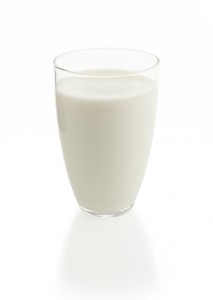Milk
Due to its nutritional value and the role it plays in growth and development, milk is an important drink for children. Along with cheese and yoghurt, milk is part of the dairy food group that provides children with an important source of calcium, which is essential for healthy bones and teeth.
Which milk?
There are so many kinds of milk – full fat, reduced fat, flavoured, unflavoured and alternatives such as soy, rice and almond milk.
When it comes to cow’s milk all of them have a similar protein and calcium content, yet reduced-fat milk has fewer kilojoules (energy), less fat and less saturated fat, making it a healthier choice.
What about A2 milk? A1 and A2 are two types of beta-casein, (a protein that is found in milk). A2 milk contains only the A2 beta casein, while regular cow’s milk includes both A1 and A2 beta-casein. According to Food Standards Australia New Zealand, there is limited scientific evidence regarding the benefits of A2 milk and consumers should continue to consume milk, regardless of whether it contains A1 or A2 proteins.
Flavoured milk: yay or nay?
Although flavoured milk contains added sugar, it still contains the same beneficial nutrients as plain milk. The best choice for kids is reduced-fat plain milk, however, if flavoured milk is more palatable and it helps a child to consume more dairy, then small serves that are less than 300ml, a few times a week, are suitable healthy choices.
Flavoured milk does contain more sugar than plain milk, however, it has less sugar than many juices, energy drinks, soda or fruit drinks. Plus, it provides children with protein and calcium, while other sugar-sweetened drinks have little nutritional benefit and are more easily over consumed, which can lead to weight gain.
According to the most recent Australian National Children’s Nutrition and Physical Activity Survey, children and teenagers are not getting enough calcium. Promoting milk consumption, even if it’s flavoured milk, is important. Flavoured milk provides calcium and protein while making children feel fuller, which reduces their likelihood of consuming other nutritionally inferior snacks. A study in America found that children who consumed plain or flavoured milk increased their intake of essential nutrients without causing an increase in their body mass index (BMI).
Why reduced-fat milk?
There is a common misconception that low-fat milk is missing all the “good stuff”. This is untrue, in fact, many reduced-fat products have more protein, calcium and B vitamins than their full-fat counterparts. It is recommended that children over two years of age drink low-fat milk. Full fat milk contains extra kilojoules (energy) and saturated fat, both of which need to be moderated in the diet.
What about soy milk and other alternatives?
Dairy alternatives such as soy, rice and almond milk are recommended for those who suffer from lactose intolerance, have a dislike for dairy milk, or have dairy allergies. If you’re going to try them, buy products that are calcium fortified and choose low-fat varieties first. To check if these alternatives are fortified, turn to the nutrition information panel and look for calcium. There should be at least 100mg Calcium/100mL.







